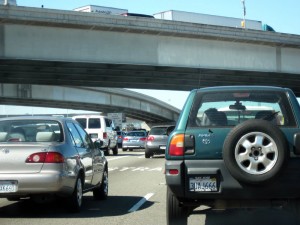
This won’t come as a surprise to Bay Area residents: the region is still growing. By one estimate, the Bay Area will add two million people by 2040, a 30 percent increase over today’s population of about seven million.
More people means more housing and more traffic. But regional planning agencies have another target to contend with: by 2040, the Bay Area must cut its greenhouse gas emission by 15 percent. It’s part of SB 375, a state law requiring local communities to help meet California’s climate change goals through land use and transit planning.
The Bay Area’s effort is being coordinated with Plan Bay Area, a region wide development plan being put together by the Association of Bay Area Governments (ABAG) and the Metropolitan Transportation Commission (MTC).
“We have had a pattern in the past of extending our development and urban frontiers into our open space and green space,” says Miriam Chion, Planning and Research Director at ABAG. “And that resulted in a lot more driving.”
Chion says the key to cutting greenhouse gas emissions is giving residents more options for public transit or walking. Plan Bay Area identifies “Priority Development Areas,” where 80 percent of new housing and 60 percent of new jobs would be located in walkable neighborhoods that are close to transit and series.